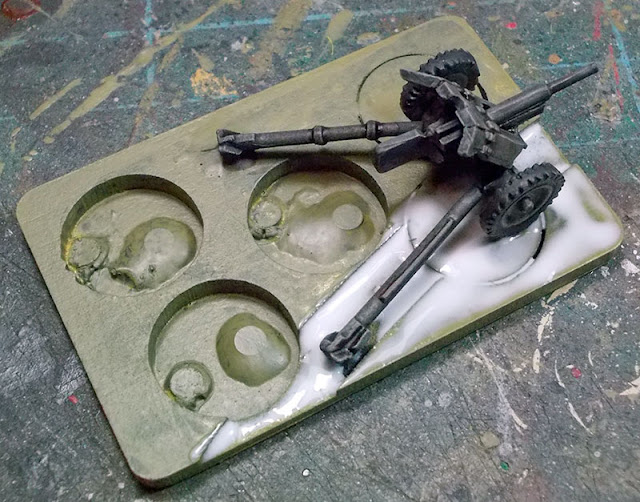It's an old Revell 1/144 scale Ju87D Stuka dive bomber. I've had it sitting around in a drawer for decades, and it had got a bit battered — the tailplanes needed to be glued back in place, and its lost its dive-brakes, but it will do as a representative model of a ground-attack aircraft so I made a start on painting it.
 |
| Belly-up, showing the Cunning Clip |
 |
| The magnetic stand |
The clip looks fairly horrible and obvious in the photos, but fortunately in real life it doesn't stand out nearly so much. If I cared to take the trouble, it could be inset into the belly of the plane and faired in, but I don't think it's worth the effort for this particular model, which isn't a spectacularly detailed representation in any case.
Next day
I decided that my splinter camo looked like crap, so I took it back to overall RLM Grau.
Lesson learned here: paint yellow first, over a white undercoat. Then paint everything else. Yellow is not an opaque pigment by any means.
I don't have any decals of a useful size for this aeroplane, so I suppose I shall have to paint all the markings freehand, which I am not really looking forward to at all.
Next Stage
With the canopy and some of the other details painted, it's starting to come together.I'm in two minds about whether to paint in any panel detail or not. There's virtually none on the model itself to guide me, and it would require painting lots of dead straight lines, which is not a lot of fun.
And Next...
I remembered that I had a 0.05mm fibre-tip pen, so I gave that a go to draw in some panel lines.It didn't much like drawing on the paint surface (or maybe it's just getting a bit old and stale) but I eventually got a bunch of lines in what I think are roughly the right places.
I'm glad I did it; I think it makes the aeroplane look a lot better.
And now I have to gird my loins for painting a whole lot of crosses and letters. Groan.
Next Day
Now, on to the flight stand.This is a 3mm acrylic rod, buried in a stack of washers covered with epoxy putty.
The rod is roughly 150mm long, but I didn't measure it exactly. It's difficult to make out in the photo, being transparent, but I melted and smushed the end of the rod — a little magnet will be epoxied there.
The folded card is there to make sure that the rod stays exactly vertical and square while the putty is setting.















































